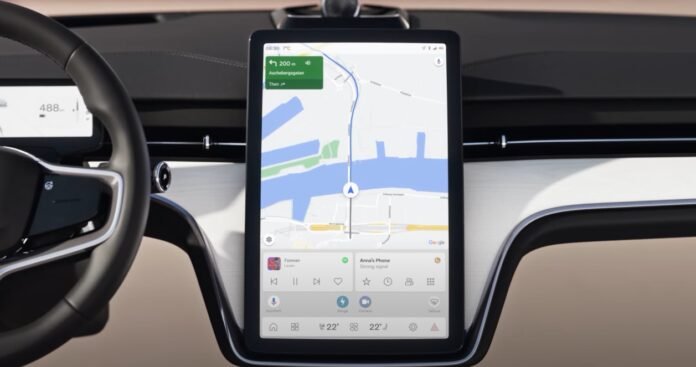The future of integration between software and vehicles is also played in terms of aesthetics, and Google knows this well; Precisely for this reason in the coming weeks Google Maps on Android Automotive will receive an important graphic updatedesigned to better adapt to the look of individual car brands.
It starts with polestarbut a wider strategy is glimpsed on the horizon; Let’s see together what will change, because this novelty is relevant for users and what perspectives the future of the Google experience in the car opens.
Google Maps adapts to the design of cars with Android Automotive
As many of you already know, Android Automotive is the native operating system of Google for cars, different from Android Auto that projects the smartphone system and already adopted by several brands to manage infotainment, navigation, climate and other commands.
To date, however, the Android Automotive apps (including Google Maps) had a uniform and standard interface, regardless of the car brand; In other words, although the car manufacturers could customize the general environment of the car, The apps maintained their own styleoften in contrast with the surrounding aesthetic.
This situation is about to change, Google Maps will begin to adapt part of its design to the car interface, starting from polestar vehicles; This was announced by the company itself during London’s Sxsw and the novelty was also relaunched via LinkedIn.
The change mainly concerns the visual aspect of the interface, the rounded elements of the current Google Maps design will give way to a more consistent style with the rest of the polestar system.
In particular, among the news already confirmed we find redesigned buttons more sober and geometric, Orange accent colors in line with the graphic palette of Polestar, a stylistic integration with the rest of the interface Android automotive vehicle.
The shared images that you can see just above clearly show the visual leap compared to the classic look of Maps, which so far has always maintained a Google style identity with the usual gray and blue tones and the round icons.
This novelty will be implemented on all Polestar cars in the coming weeksbut for the moment there are no timing or official confirmations on the release for other brands; However, it is legitimate to assume that the Mountain View company is testing the ground for a future expansion also on other Android Automotive vehicles.
Even if at first glance it may seem like a simple restyling, this move marks an important paradigm change in Google’s approach to the personalization of the experience by car, it means essentially that Android Automotive apps can finally integrate in a more natural and harmonious way with the digital dashboard of the various producers.
A differentiation that, in the long run, could also push other developers to follow the example of Google and review your approach to design by car.
As mentioned, it is not known if and when other brands follow the example, the exclusive introduction on Polestar cars can be read as a technical and design trial bench, useful for collecting feedback and optimizing the experience before a possible wider rollout.

